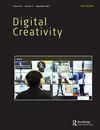利用资源追踪访谈揭示数字调解国内做法对资源的影响
IF 2.7
4区 艺术学
0 ART
引用次数: 2
摘要
摘要几十年来,住宅一直是社会科学和互动设计界的调查对象。这主要是因为人们希望了解技术、能源需求,以及如何从社会实践的角度来理解它。在本文中,我们回顾了几项试图捕捉这种关系的研究。我们引入了一种不断发展的方法论方法,我们称之为“资源跟踪访谈”,该方法使用来自家庭中部署的传感器和软件的细粒度定量数据的可视化来扩展访谈实践。通过促进参与者和研究人员之间更全面的描述和共同理解,这种方法可以更好地揭示数字连接家庭中的技术和能源使用模式,以及这与国内实践的关系。我们第一次反思了这种方法的优势和局限性,作为其他研究类似社会技术环境的人的指南。本文章由计算机程序翻译,如有差异,请以英文原文为准。
Unpacking the resource impacts of digitally-mediated domestic practices using resource trace interviewing
ABSTRACT The home has been the subject of investigation in the social sciences and interaction design communities for decades. This has been driven not least by a wish to understand technology, energy demand, and how it might be understood in terms of social practices. In this paper, we reflect on several studies that have sought to capture this relationship. We introduce an evolving methodological approach we term ‘Resource Trace Interviewing’ that extends interview practice using visualizations of fine-grained quantitative data from sensors and software deployed in the home. By facilitating fuller accounts and joint sense-making between participants and researchers, this method better reveals the patterns of technology and energy use in the digitally connected home, and how this in turn relates to domestic practices. We reflect, for the first time, on the strengths and limitations of this approach as a guide to others studying similar socio-technical settings.
求助全文
通过发布文献求助,成功后即可免费获取论文全文。
去求助
来源期刊

DIGITAL CREATIVITY
ART-
CiteScore
3.10
自引率
9.10%
发文量
19
期刊介绍:
Digital Creativity is a major peer-reviewed journal at the intersection of the creative arts, design and digital technologies. It publishes articles of interest to those involved in the practical task and theoretical aspects of making or using digital media in creative disciplines. These include but are not limited to visual arts, interaction design, physical computing and making, computational materials, textile and fashion design, filmmaking and animation, game design, music, dance, drama, architecture and urban design. The following list, while not exhaustive, indicates a range of topics that fall within the scope of the journal: * New insights through the use of digital media in the creative process * The relationships between practice, research and technology * The design and making of digital artefacts and environments * Interaction relationships between digital media and audience / public * Everyday experience with digital design and artwork * Aspects of digital media and storytelling * Theoretical concepts
 求助内容:
求助内容: 应助结果提醒方式:
应助结果提醒方式:


